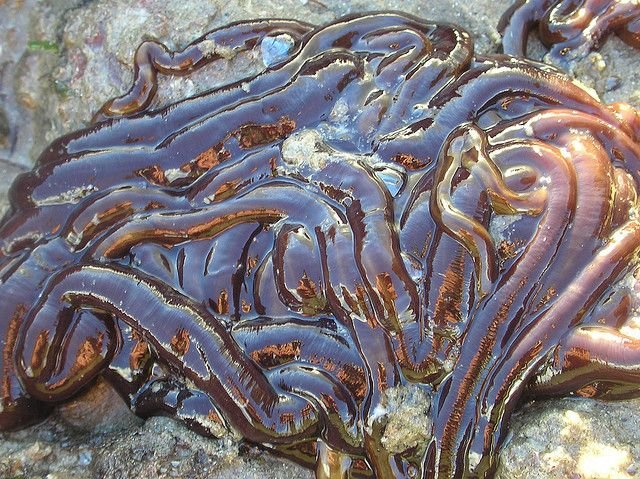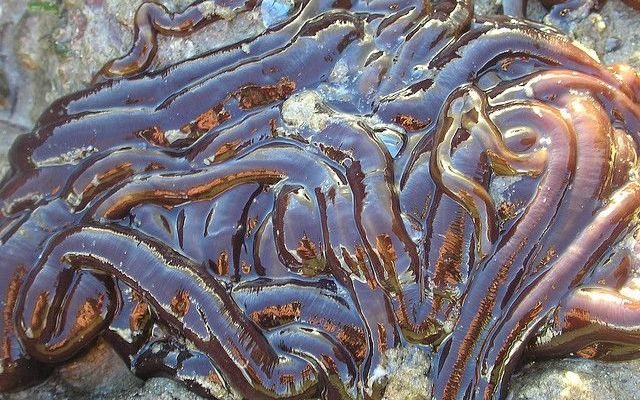
Bootlace worms belong to a fascinating family called *Lineus*, which are known for their impressive lengths and unique adaptations. Their ancient relatives, much like distant cousins at a family reunion, reveal an exciting evolutionary story that connects the past to the present. In this article, we’ll dive deep into the world of bootlace worms, exploring their fossils, ancient relatives, and what makes them so unique.
What Are Bootlace Worms?
Bootlace worms are truly peculiar creatures. Just imagine a long, thin, almost elastic worm that can stretch over 50 meters in some cases! Found mostly in European coastal waters, these worms belong to the phylum Annelida, which also includes earthworms and leeches. They have a soft body, and their color can range from pale yellow to a more vivid red or green, depending on their environment.
These worms are known for their ability to regenerate lost segments. Here’s the thing: if you were to cut one in half, it could potentially grow back into two separate worms. This regeneration process is not only impressive but also highlights the worm’s adaptability. You might be wondering why this matters. Well, regeneration gives bootlace worms a fighting chance against predators and environmental changes, ensuring their survival.
Another interesting trait is their feeding habits. Bootlace worms are mainly detritivores, consuming organic material found in the ocean floor. By breaking down this material, they play a critical role in the marine ecosystem, recycling nutrients and keeping the underwater environment healthy.
The Fossil Record of Bootlace Worms
Fossils tell a story, and bootlace worm fossils are no exception. These fossils provide a rich glimpse into the past, allowing scientists to piece together the evolutionary history of this intriguing species. You might be surprised to learn that some bootlace worm fossils date back millions of years, with origins traced to the Cambrian period, around 541 million years ago.
Fossilized remains of these worms often appear as small, straight or curved tubes, which represent the burrows they once inhabited. Paleontologists can study these traces to understand how bootlace worms interacted with their environments. These burrows reveal critical information about their behavior and habitat preferences, painting a broad picture of life in ancient oceans.
Interestingly, bootlace worm fossils are often found in sedimentary rock formations. These formations are typically created in environments like wetlands, river deltas, or oceans, providing clues about the ecosystems where these creatures thrived. By examining the types of sediments around the fossils, researchers can infer not just what these worms were like, but also the world they lived in.
Ancient Relatives of Bootlace Worms
Bootlace worms have some interesting cousins in the animal kingdom. Their ancient relatives include a variety of marine organisms, such as polychaete worms and other annelids. Comparing bootlace worms to their relatives helps us understand how these creatures adapted over time to survive in different environments.
One significant relative is the *Hyalinoecia*, another type of marine worm. Like bootlace worms, they share similar physical characteristics and feeding habits but have evolved to thrive in different settings. This kind of comparison offers a fascinating look at evolutionary paths. It’s like watching siblings grow up in different households, each developing unique traits while still sharing a common foundation.
Moreover, the study of bootlace worms and their ancient relatives contributes to our understanding of biodiversity and evolution. By analyzing genetic data and fossil records, scientists can trace lineage and assess how species have changed, adapted, or even gone extinct over time. This has broader implications for understanding resilience in changing environments, which is critical as we face climate change today.
Why Bootlace Worms Matter
You might be wondering why we should care about bootlace worms at all. Well, they serve as vital indicators of marine ecosystem health. Just as certain birds can signal changes in terrestrial environments, bootlace worms can provide clues about the state of oceanic ecosystems. Their presence or absence can indicate pollution levels or habitat disturbances, making them essential for monitoring environmental health.
Furthermore, studying these worms can offer insights into evolutionary biology. Understanding how they’ve adapted over millions of years not only highlights the resilience of life but also informs conservation efforts. By learning from these ancient relatives, we can better protect ocean environments and the myriad of species that depend on them.
Additionally, the unique biological traits of bootlace worms, especially their regenerative abilities, could inspire research in medicine and biology. Scientists are always on the lookout for nature’s secrets that could lead to breakthroughs in regenerative medicine — the study of how to heal and regenerate tissues — and bootlace worms might hold some answers.
How Bootlace Worms Compare to Other Marine Species
When you compare bootlace worms to other marine species, it’s easy to see why they stand out. For example, take sea cucumbers, which also play a role in nutrient recycling but have a more rigid body structure. While sea cucumbers can regenerate to an extent, bootlace worms take it to a whole new level, giving them a unique edge in survival tactics.
Another interesting comparison is with mollusks, like squid or octopuses. These creatures also have sophisticated adaptations but have different body structures and feeding mechanisms. While bootlace worms rely on their soft bodies and regenerative capabilities, mollusks often depend on shells for protection. Studying these differences helps us understand the diverse strategies life uses to thrive in various habitats.
Moreover, the evolutionary paths taken by bootlace worms and their relatives have resulted in a wide array of body plans and survival strategies, highlighting the complexity of marine life. It’s a reminder that even in the depths of the ocean, life finds a way to adapt, survive, and evolve.
Future Research Directions
Research on bootlace worms is ongoing, and there’s still so much to learn. Scientists are particularly interested in how climate change affects their habitats and, by extension, marine ecosystems at large. With ocean temperatures rising and pollution levels increasing, understanding the adaptability of bootlace worms may give insight into the resilience of marine life.
Moreover, the fossil record continues to provide new discoveries that can reshape our understanding of bootlace worms and their relatives. As more fossils are uncovered, paleontologists might find clues about how these organisms responded to ancient climate changes, helping us draw parallels with today’s environmental challenges.
Finally, understanding the biological functions of bootlace worms, especially their regenerative capabilities, could lead to breakthroughs in various fields, from ecology to medicine. The lessons learned from these ancient creatures not only enrich our knowledge of Earth’s history but also hold potential for future innovations.
In conclusion, bootlace worms and their ancient relatives paint a colorful picture of life’s history on our planet. These creatures aren’t just oddities; they’re vital components of marine ecosystems and fascinating subjects for scientific study. As we continue to explore and learn, we unearth not only the mysteries of these worms but also important insights into our planet’s past and future. So, the next time you think about fossils, remember the bootlace worm — a true marvel of the marine world.

